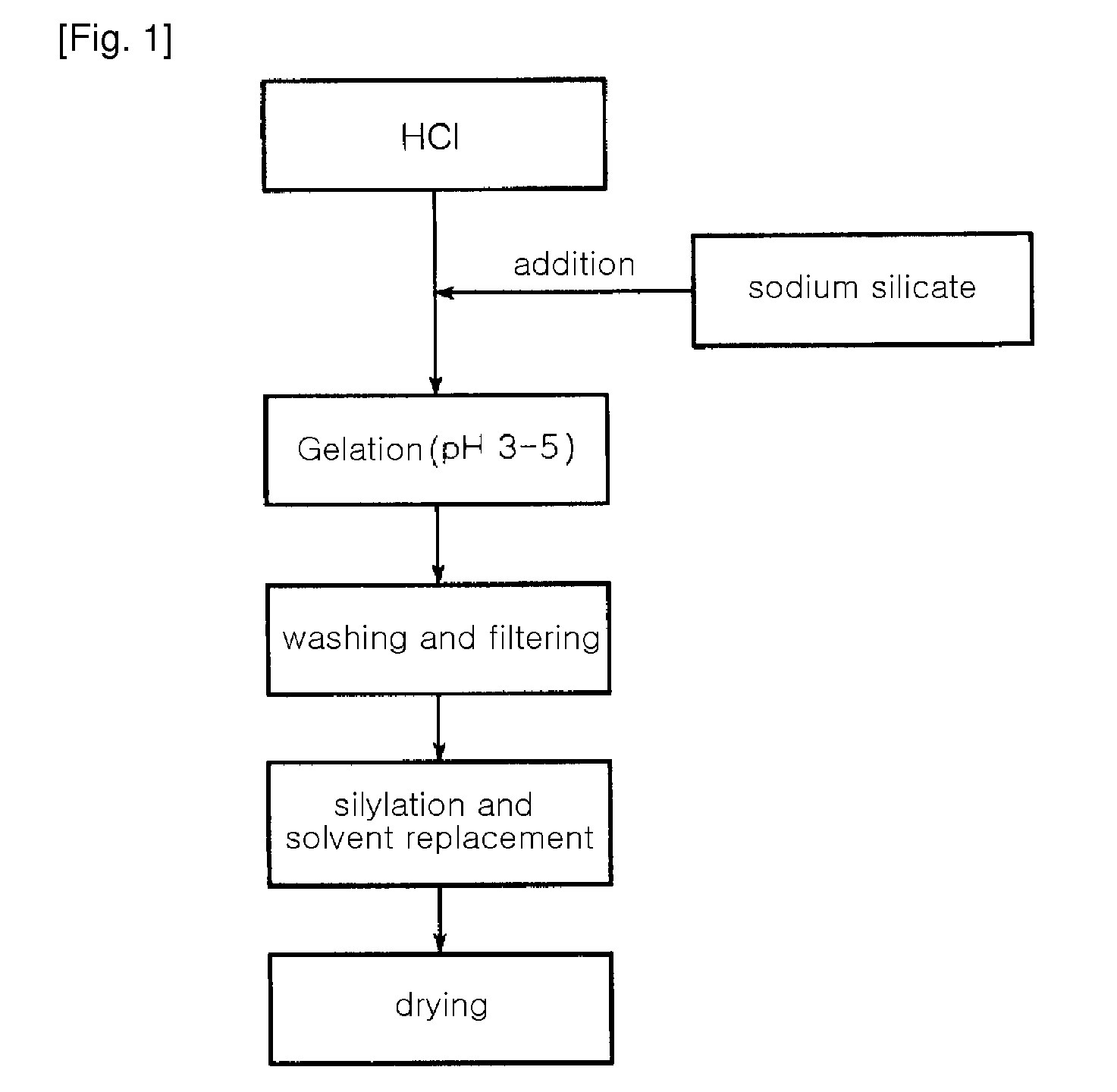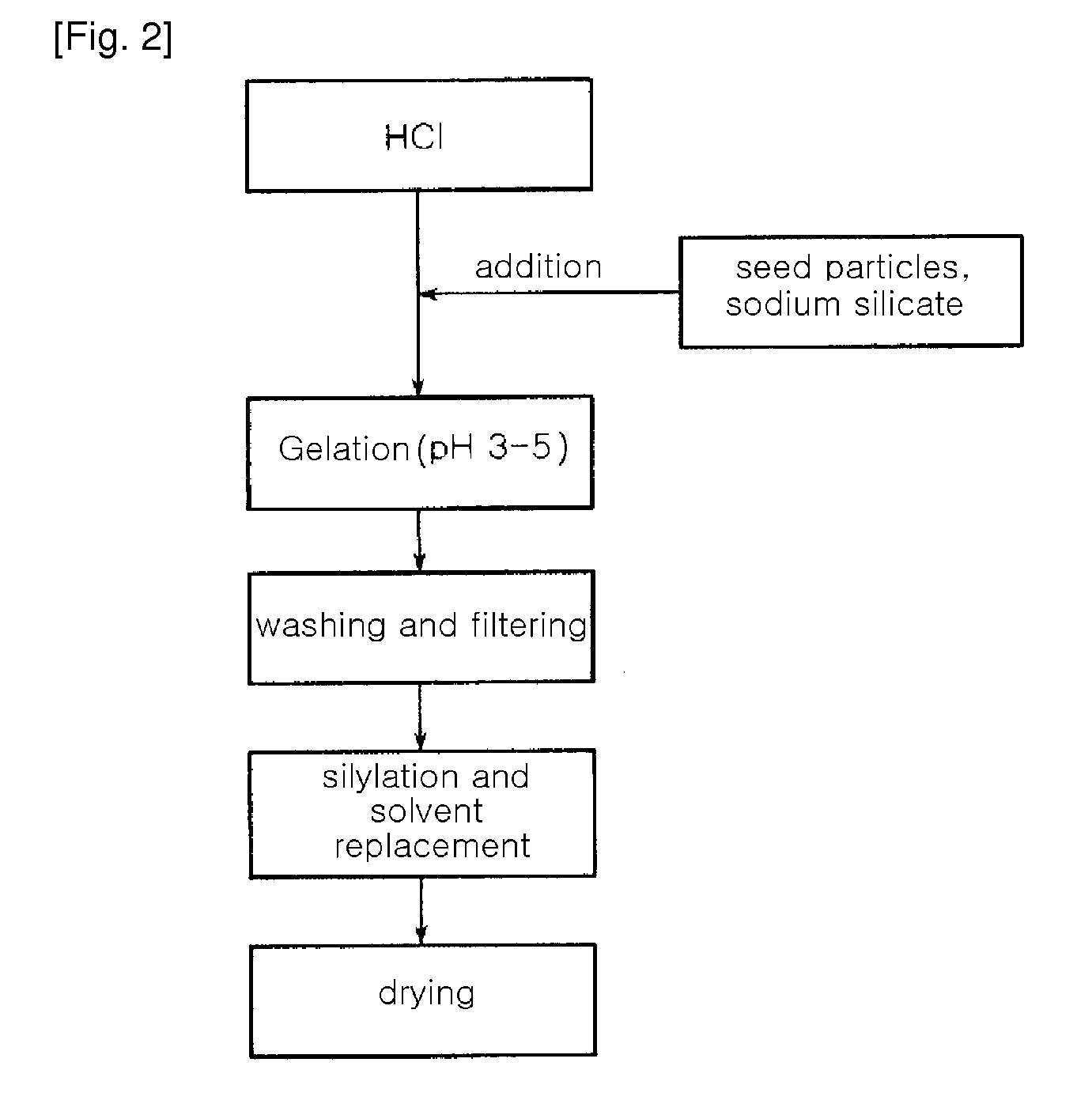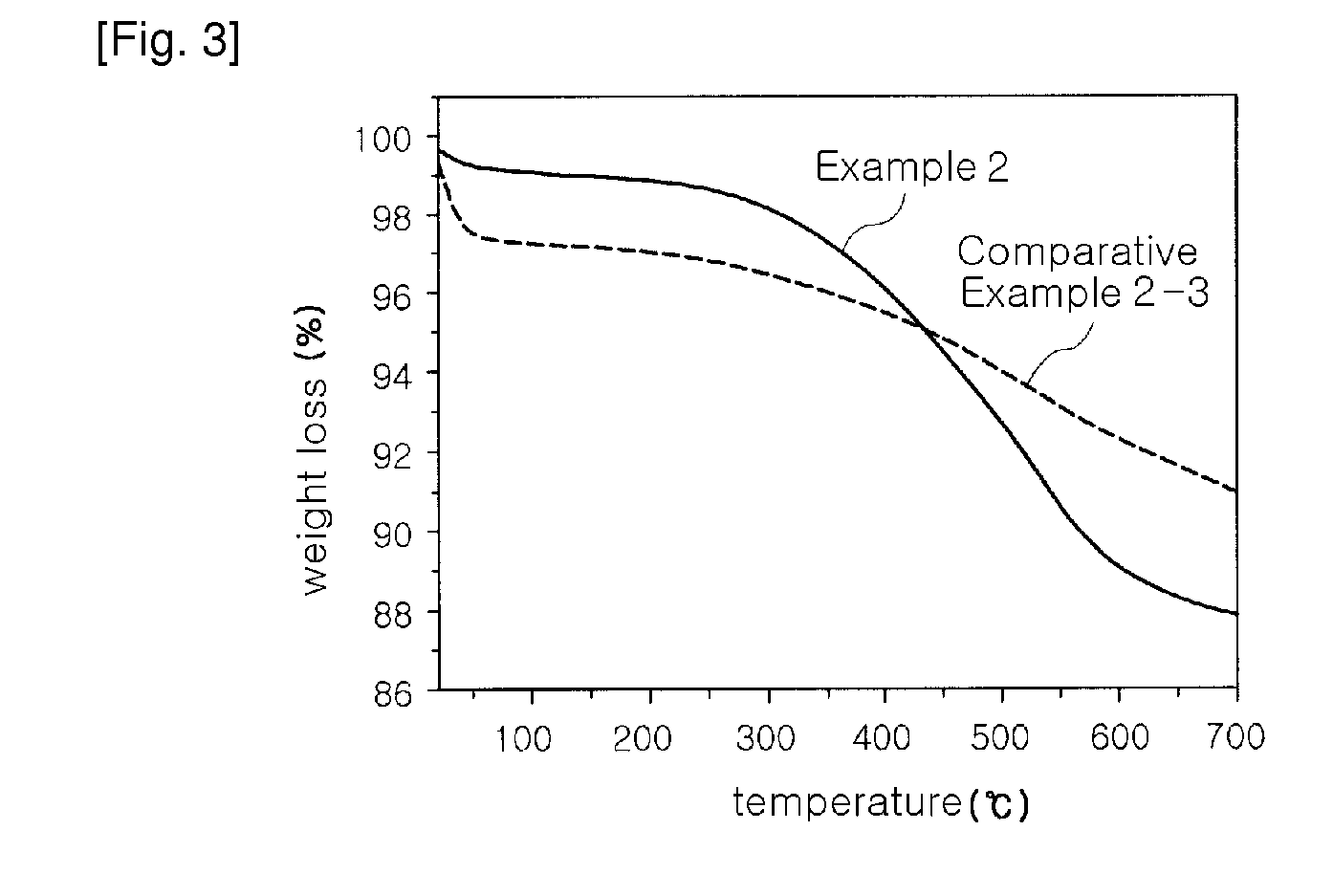Method for preparing permanently hydrophobic aerogel and permanently hydrophobic aerogel prepared by using the method
- Summary
- Abstract
- Description
- Claims
- Application Information
AI Technical Summary
Benefits of technology
Problems solved by technology
Method used
Image
Examples
example 1
[0052]A water glass solution (a 3-fold dilution of a 35 wt % sodium silicate solution in water (i.e. the ratio of a 35% sodium silicate solution and water (1:3, wt / wt)) was slowly added to IL of a 1N hydrochloric acid solution with stirring, to adjust pH of the water glass solution to 3.5. At this time, a reaction temperature was 80° C. The solution was further stirred for about 2 hours, while the pH of 3.5 was maintained, thereby preparing silica hydrogel. The hydrogel was put in a mixer, and was then washed with distilled water several times for 4 hours, to remove Na+ ions contained therein. The amount of Na+ ions in the washed hydrogel was 2,000 ppm. The resulting silica hydrogel was subjected to solvent displacement to remove water contained therein using solvent such as n-butanol, tert-butanol, propanol, hexane and acetone respectively. The silica hydrogel was immersed in the each solvent and refluxed at 120 to 150° C. for 4 hours. The resulting silica hydrogel was dried at 150...
example 2
[0054]A water glass solution (a 3-fold dilution of a 35% sodium silicate solution in water (i.e. the ratio of a 35% sodium silicate solution and water (1:3, wt / wt)) was slowly added to 1 L of a 1N hydrochloric acid solution with stirring, to adjust pH of the water glass solution to 3.5. At this time, a reaction temperature was 80° C. The solution was further stirred for about 2 hours, while the pH of 3.5 was maintained, thereby preparing silica hydrogel. The hydrogel was put in a mixer, and was then washed with distilled water several times for 4 hours, to remove Na+ ions contained therein. The amount of Na+ ions in the washed hydrogel was 2,000 ppm The resulting silica hydrogel was simultaneously subjected to permanently hydrophobic treatment of the surface thereof with a silane compound and removal of water contained therein using n-butanol. The silica hydrogel was immersed in a silylating solution of 5 wt % ethyl trimethoxy silane (ETMS) in n-butanol under acidic conditions of pH...
example 3
[0060]Aerogel was prepared in the same manner as in Example 2, except that hexamethyl disilane (HMDS) was used as a silylating agent instead of ETMS. After drying at 150° C. for 2 hours, the thermal conductivity (measured 1 week after the preparation) of prepared aerogel powder was 8 mW / m·K.
PUM
 Login to View More
Login to View More Abstract
Description
Claims
Application Information
 Login to View More
Login to View More - R&D
- Intellectual Property
- Life Sciences
- Materials
- Tech Scout
- Unparalleled Data Quality
- Higher Quality Content
- 60% Fewer Hallucinations
Browse by: Latest US Patents, China's latest patents, Technical Efficacy Thesaurus, Application Domain, Technology Topic, Popular Technical Reports.
© 2025 PatSnap. All rights reserved.Legal|Privacy policy|Modern Slavery Act Transparency Statement|Sitemap|About US| Contact US: help@patsnap.com



